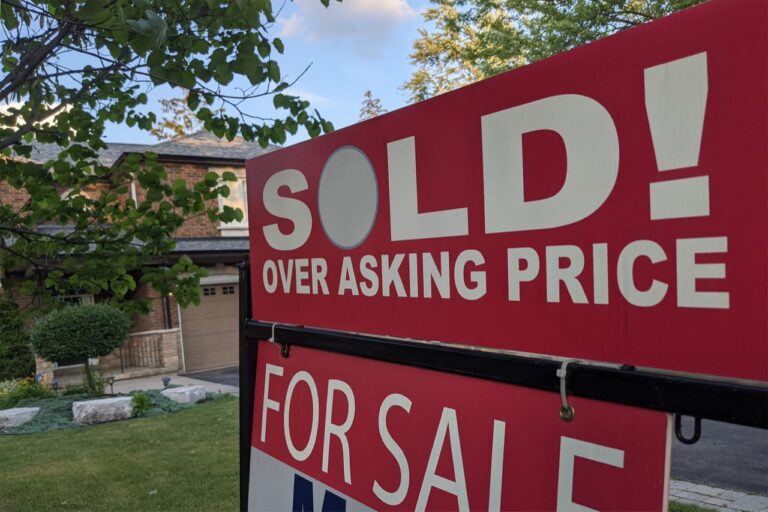When you’re buying a home in Canada, the magic number many people aim for is a 20% down payment. That’s because once you hit 20%, you avoid the added cost of mortgage default insurance. But what if you can afford to put down more than that? Should you?
The short answer is: it depends on your broader financial picture. In some cases, putting down more than 20% can be a smart move. In others, it might make more sense to keep some of that money working elsewhere.
Let’s walk through the pros and cons of putting down more than 20%, and how to decide what’s best for your situation.
What Happens at 20%?
In Canada, if your down payment is less than 20%, you are required to purchase mortgage default insurance (often called CMHC insurance, even if another insurer is used). This insurance protects the lender in case you default on your mortgage, but you pay the premiums, which can add thousands to your overall cost.
By putting down at least 20%, you avoid this cost and are considered to have a conventional mortgage. From that point forward, any additional down payment is optional—but it can still affect your financial flexibility, your monthly payments, and your overall wealth strategy.
The Pros of Putting Down More Than 20%
1. Lower Mortgage Payments
A larger down payment means you’re borrowing less. This leads to smaller monthly payments, which frees up cash flow for other uses like savings, home maintenance, or even retirement.
Let’s say you’re buying a $600,000 home. Putting down 20% ($120,000) leaves you with a $480,000 mortgage. If you put down 30% ($180,000), your mortgage drops to $420,000. At current rates, that could lower your monthly payment by a few hundred dollars.
Check out our Mortgage calculator to see what might be best for you.
2. Less Interest Paid Over Time
A smaller loan means less interest paid over the life of your mortgage. Even if your mortgage rate is relatively low, this can add up to tens of thousands of dollars in savings over 25 years.
3. Easier to Qualify
If your monthly housing costs are lower because of a higher down payment, you may qualify more easily for a mortgage. This is especially important if your income is variable or you’re self-employed.
4. Less Risk in a Market Downturn
Home values can go down. If you have a small down payment and the market drops, you might end up owing more than the house is worth. This is called being “underwater” on your mortgage. A bigger down payment gives you more equity right away, which provides a cushion against fluctuations in home values.
The Cons of Putting Down More Than 20%
1. Less Liquidity
When you put more money into your home, that cash is no longer easily accessible. Yes, you’re building equity, but you can’t easily tap into that equity without refinancing, selling, or taking out a home equity line of credit. And all of those options come with fees, delays, or borrowing costs.
If you don’t have a solid emergency fund or any savings set aside, it’s better to hold onto some of your cash. Homes are not liquid assets, and unexpected expenses—like job loss, car repairs, or medical issues—can come at any time.
2. Missed Investment Opportunities
Depending on your risk tolerance and the state of the market, investing the extra money elsewhere could give you a better return than using it to pay down a low-interest mortgage. For example, if your mortgage rate is 4.5% but you could earn 7%–8% on investments over the long term, you might build more wealth by keeping the money in the market.
This is not guaranteed, of course, and returns depend on the timeframe and how the money is invested. But it’s a key consideration for people trying to grow their wealth.
3. Other Debts Should Come First
If you have high-interest debt like credit cards or payday loans, it almost always makes more sense to pay those off first. There is no benefit to having a low mortgage while carrying a credit card balance at 20% interest. The same applies to car loans and lines of credit with high rates.
So, Should You Put Down More?
It comes down to your personal financial situation. Here are a few questions to help guide your decision:
- Do you have 3–6 months of expenses saved in an emergency fund?
- Are all high-interest debts paid off?
- Will you still have some liquid savings after your down payment?
- Are you comfortable with less cash on hand in exchange for lower mortgage payments?
If you can answer yes to most of those, putting down more than 20% might be a wise move. You’ll enjoy a smaller loan, less interest, and more peace of mind.
If you’re not sure, consider splitting the difference. Put down enough to avoid mortgage insurance and keep the rest available for investing or emergencies.
Final Thoughts
Buying a home is one of the biggest financial decisions you’ll make. While there’s no one-size-fits-all answer, it’s important to think beyond just the monthly mortgage amount. Consider how your down payment fits into your full financial picture—now and in the future.
At The Local Broker, we’re here to help you make a decision that fits your goals. Whether you’re aiming to buy your first home or looking to refinance, we can guide you through the pros and cons of different strategies and help you secure the best mortgage for your situation.
Have questions? Reach out to us—we’re always happy to help.
